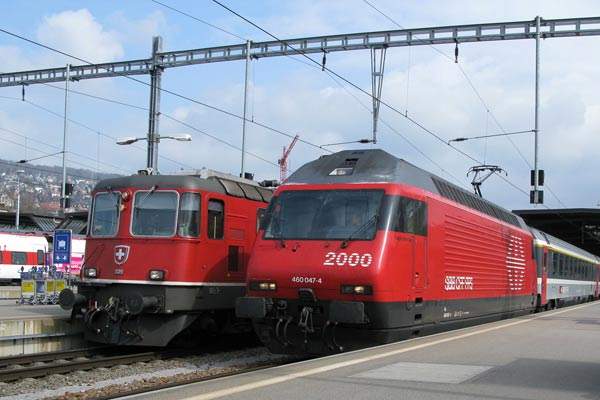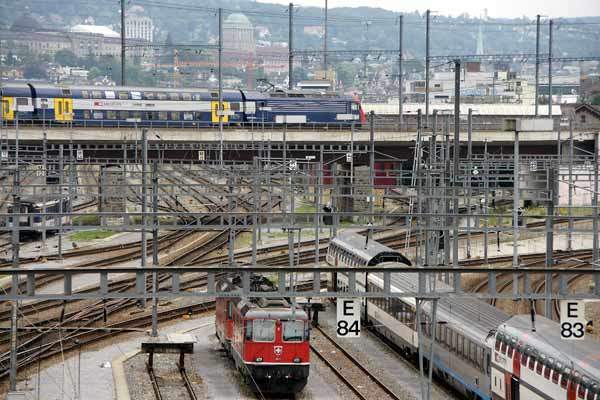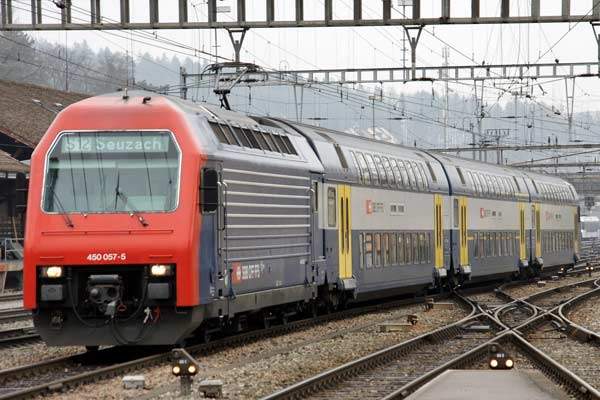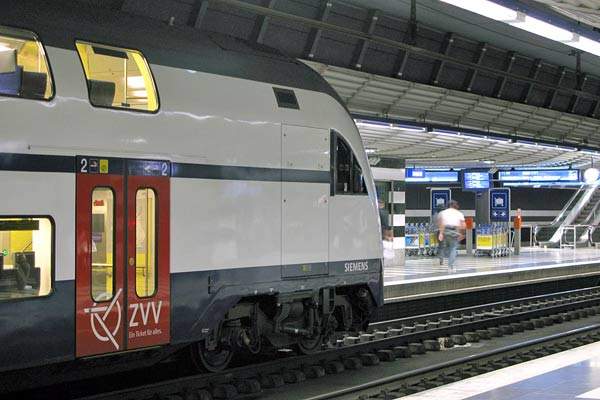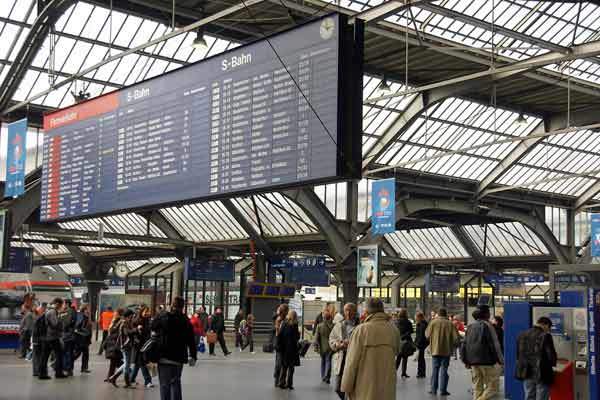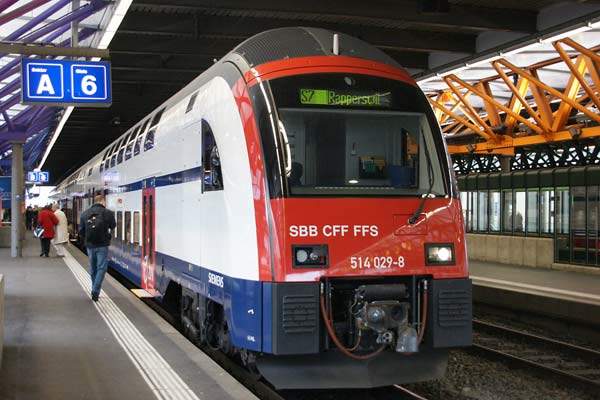Zurich is Switzerland’s largest city and has one of Europe’s greatest concentration of rail infrastructure. As well as a comprehensive tramway system, it is the focal point for local, national and international railway traffic.
The Durchmesserlinie project, also known as the Diameter Line, increases capacity at the Zürich Central Railway Station.
Projects such as the Glattalbahn (VBG) and Tram Zurich West light rail schemes were partly aimed at dispersing demand by creating more interchanges around the metropolitan area.
Zurich Hauptbahnhof (HB) is the largest and busiest station in the country with nearly 3,000 trains travelling daily. It is mainly a surface terminus in the city centre.
Situated lengthways between the rivers Sihl and Limmat, it is fronted by busy tram stop, and its four-platform sub-surface station for S-Bahn trains (regional trains primarily for the Zurich region) was turned into a through route in 1991.
However, even with the adoption of multiple units and push-pull formations, which save the need for locomotive changes at surface-level platforms, reversal is still time consuming and an inefficient use of platform and track space.
Need for Durchmesserlinie project
Bahnhof Oerlikon already handles traffic for the north and north-east, each main rail arteries, including services routed via Zurich Airport. Many reverse at Zurich HB in a wide arc from Basel around to the Gotthard line and Chur, with other passengers needing to change trains for onward travel.
By allowing services to pass through the HB hub, the Durchmesserlinie project represents a large-scale reshaping of Swiss train services beyond Zurich.
The project will allow for alterations and expansion of S-Bahn services that account for a large proportion of train movements in the area, eventually adding long-distance trains.
Durchmesserlinie project details
The 9.6km-long Durchmesserlinie connects Altstetten, Zurich HB and Oerlikon designed to address capacity issues in the region.
Groundbreaking of the project was held in September 2007 and construction was carried out in two phases.
Phase one included a 4.8km-long Weinberg double-lane tunnel, which is the cross-city link.
Construction of a new viaduct linking the tunnel to the main line running westwards to Altstetten was completed by 2015. It allows the Löwenstrasse platforms to be served by 40 long-distance and 320 commuter trains a day.
The twin-track tunnel passes beneath the Limmat before widening to a four-platform layout at a new Zurich HB Löwenstrasse station 16m beneath the main platforms.
As part of the national rail infrastructure, the line is fitted with 15kV AC electrification. Met from national and regional public funds, the project cost estimate was Sfr2.03bn ($2.01bn) according to 2005 prices.
The 1,156m-long Letzigrabenbrücke and 394m-long Kohlendreieckbrücke bridges were built under the second phase to provide an exit to the west.
The Durchmesserlinie (DML) cross-city line from Wiedikon via the Löwenstrasse station to Oerlikon was opened for passenger services in June 2014. The section between Löwenstrasse station and Altstetten became operational in December 2015.
Rolling stock
Zurich uses a mix of rolling stock for S-Bahn services, including rebuilt RBe 540 EMUs mainly dating from the 1960s. Responding to growing traffic and service expansion, double-deck DPZ stock operated in push-pull mode with Re 450 single-ended locomotives was introduced from 1989.
In parallel with the Durchmesserlinie, the S-Bahn was re-equipped, the earlier high-capacity stock being due for upgrading. Entering public service in 2006, 60 Siemens RABe 514 140km/h (88mph) double-deck multiple units were ordered.
A Siemens / Bombardier consortium received an order in September 2008 to supply 113 low-floor intermediate double-deck coaches in order to strengthen existing S-Bahn formations.
Stadler was contracted in June 2008 to supply 50 six-car double-deck new design electric multiple units, with options for more under the contract.
Compatible for operation with existing S-Bahn stock, they will have a capacity for 1,694 passengers (526 seated) and have a top speed of 160km/h.
Signalling and communications
Switzerland is a European leader for implementing the European rail traffic management system (ERTMS) project and the new line is equipped as an integral part of the principal route network.
Nine emergency escape and access points are built on the tunnel section.
SBB operated an information centre and held site visits to explain the works and acted as public relations for the project.
Contractors involved
JORDAHL provided anchor channels to securely attach catwalks, safety guards and hand rails, while R + P supported IBN DML in the planning and coordination of project commissioning.
Amstein + Walthert provided building technology planning, lighting design, fire protection and fire coordination services.
EBP is responsible for planning and development of segment four of the railway line. COMLAB provided tunnel radio system for section of Löwenstrasse station and the Weinberg tunnel.

